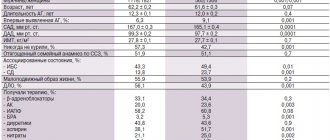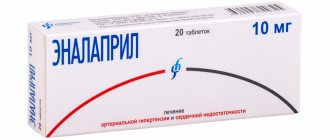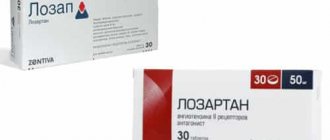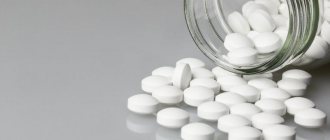For long-term treatment of hypertension, five main groups of drugs are currently recommended. We have already talked about two of them - ACE inhibitors and angiotensin II receptor antagonists that affect the renin-angiotensin-aldosterone system (RAAS). In this article, we will describe three more groups of antihypertensive drugs and tell you what to pay attention to when servicing prescriptions for these drugs, and what he should warn the buyer about. So today the focus is on diuretics, beta blockers and calcium channel blockers.
Diuretics
Maintaining water-salt balance in the body is the most important condition for maintaining stable blood pressure levels. Renal nephrons regulate fluid volume and electrolyte content in the body through secretion and reabsorption. The water-salt balance can be disturbed in a number of conditions, including hypertension, heart or kidney failure, as well as nephrotic syndrome, cirrhosis, etc.
Diuretics can normalize water-salt balance by increasing the rate of urine flow and excretion of Na+ and the accompanying anion, usually Cl-. The major determinant of extracellular fluid volume in the body is NaCl, and most diuretics reduce extracellular fluid volume by reducing total body NaCl [1].
Today, both thiazide and thiazide-like diuretics and loop diuretics are used to treat arterial hypertension.
Contraindications for use
When treating with thiazide diuretics, it is important to know the existing contraindications:
- gout caused by a metabolic failure. Acceleration of processes will lead to exacerbation of the disease;
- hyperuricemia, a disease characterized by large amounts of uric acid in the body. Removing moisture from the body will increase the concentration of acid;
- hyponatremia and hypokalemia, in which the lack of corresponding substances in the body increases with the excreted fluid;
- hypercalcemia, when there is too much calcium in the body and possible formation of stones and other formations in the renal system, which leads to complications of urolithiasis;
- heart and kidney failure, acute form of the disease. Taking thiazides is strictly contraindicated, since the kidneys cannot cope with the increased volume of incoming water;
- Addison's disease is an inflammatory process in the adrenal cortex, leading to the cessation of the synthesis of corticosteroids.
Thiazide and thiazide-like diuretics
Mechanism of action
Thiazide and thiazide-like diuretics act mainly in the cortical segment of the nephron loop, at the site of inhibition of the reabsorption of cations (potassium, sodium, magnesium). They block the transport protein that ensures the transfer of sodium and chlorine into tubular epithelial cells, as a result of which the excretion of these electrolytes in the urine increases. The excretion of calcium ions, on the contrary, decreases [2]. This is accompanied by increased diuresis and a decrease in circulating blood volume [3].
In elderly patients, thiazide and thiazide-like drugs are more effective than β-blockers and ACE inhibitors [3].
Even in low doses, they have fairly high antihypertensive activity, which is not inferior to the effect of calcium antagonists and α1-adrenergic blockers [4].
According to research, with regular use of thiazide and thiazide-like diuretics, systolic blood pressure (BP) decreases by an average of 10–20 mmHg. Art., and diastolic - by 5–15 mm Hg. Art. In addition, drugs of this group reduce peripheral vascular tone [2].
Indications and properties
Drugs in this group are used both as monotherapy and in combination with other antihypertensive drugs for arterial hypertension. In addition, they are prescribed for chronic heart failure, renal dysfunction, premenstrual syndrome (to reduce swelling associated with PMS).
Thiazides and thiazide-like diuretics, like most other classes of modern antihypertensive drugs, exhibit a complex cardiovascular effect [3]:
- reduce blood pressure;
- prevent the development of cardiovascular complications;
- reduce cardiovascular mortality.
The effect on cardiovascular risks is due to the ability of drugs in this group to reverse the development of left ventricular hypertrophy. Another positive property is that they increase the effectiveness of antihypertensive drugs of the other four pharmacological groups.
When taking some drugs of this group, the level of uric acid increases, and slightly - glucose and atherogenic lipids [2].
Individual representatives
- Hydrochlorothiazide is one of the most studied and popular diuretics used to treat hypertension. Efficacy and a high safety profile have been proven in long-term randomized studies, so this diuretic is one of the drugs of choice for long-term treatment of hypertension [4].
- Indapamide, unlike other thiazide (and thiazide-like) diuretics, blocks calcium channels in the muscular wall of the arteries, reducing peripheral vascular resistance and exerting a direct vasodilator effect [2, 5]. Indapamide has proven significant organoprotective effects - regression of left ventricular hypertrophy, kidney protection. Hypothiazide is significantly superior in its effect on systolic blood pressure [5]. In addition, the drug does not affect glucose levels and is suitable for use in diabetes mellitus [2].
Portability
Thiazides and thiazide-like diuretics in low doses are well tolerated and do not cause significant changes in carbohydrate and lipid metabolism. Rarely, usually in men, gout may develop while taking medications [4]. In addition, thiazide diuretics have an adverse effect on erectile function.
What should I warn the client about?
- During treatment, electrolyte balance may be disturbed, therefore, if you experience dry mouth, thirst, heart rhythm disturbances, or unusual fatigue during treatment, you should contact your doctor as soon as possible [6].
- When taken together with alcohol, orthostatic hypotension may occur (a sharp decrease in pressure when changing body position from horizontal to vertical) [6].
- At the beginning of treatment with drugs of this group, it is not recommended to drive a car or perform work that requires increased attention. The duration of this period is individual [6].
- Thiazide and thiazide-like diuretics may contribute to the development of erectile dysfunction. If a client purchases drugs from this group (including as part of combination drugs) and PDE-5 inhibitors, it is appropriate to warn him about the possible negative impact of the former on sexual function.
Side effects
Taking TZ can cause:
- darkening of the eyes, dizziness;
- general weakness;
- abdominal pain, nausea and diarrhea;
- decreased visual acuity;
- increased concentration of uric acid;
- increased calcium levels;
At the beginning of a course of taking thiazides, it is not recommended to perform complex work or drive a car due to a decrease in concentration and reaction speed. Calcium losses should be replenished by taking drugs simultaneously with TZ: Asparkam, Panangin, Potassium normin. Include dried apricots, nuts, and honey in your diet.
The patient's diet should include dried apricots, honey and nuts
When using drugs of the TD class, it is necessary to control the balance of microelements in the body. Diuretics can cause potassium or sodium levels in the blood to fall below normal levels.
If it is impossible to discontinue the drug, a special serum or other means are prescribed to restore potassium balance.
If, as a result of taking thiazide diuretics, changes in the composition of the blood plasma occur (the risk of blood clots has increased), then they will have to be discontinued. If the concentration of uric acid increases, which threatens kidney damage and the development of arthritis, then thiazide diuretics should be abandoned.
Loop diuretics
Mechanism of action
Diuretics acting at the level of the loop of Henle are the most potent representatives of this class of drugs, since 20-30% of all filtered sodium is reabsorbed through this segment of the nephron. By reducing the volume of circulating blood, loop diuretics reduce the load on the myocardium, reduce congestion in the lungs and relax the vascular wall. They are characterized by a rapid onset of action and a powerful short-term effect [7].
Indications and properties
The scope of use of loop diuretics is usually limited to emergency situations. They are prescribed for edema syndrome of various origins. In arterial hypertension, drugs of this series are used for hypertensive crises, resistance to thiazide diuretics, as well as for concomitant severe renal failure [7]. An exception may be the modern loop diuretic torasemide.
Individual representatives
- Furosemide is a powerful loop diuretic. Dilates blood vessels, increases renal blood flow, has antiaggregation activity. It is used for acute conditions, rarely for the treatment of hypertension [6]. The drug is “reserved” for patients resistant to traditional antihypertensive therapy.
- Torsemide is a loop diuretic, which is characterized by a less pronounced peak effect and a longer duration of action compared to furosemide. The antihypertensive effect has been proven in a number of clinical studies. They are used both for long-term treatment of hypertension and as part of combination therapy for chronic heart failure [7]. However, current guidelines for the treatment of hypertension do not mention the drug as a first-line treatment [3].
Portability
Loop diuretics can contribute to a sharp decrease in blood pressure and the development of orthostatic hypotension.
What should I warn the client about?
- Excessive loss of fluid and/or electrolytes may occur while taking loop diuretics. It is important to tell the buyer that if you experience dry mouth, increased thirst, or dizziness, you should contact your doctor as soon as possible.
- Loop diuretics are not recommended for use by vehicle drivers and people whose work requires increased concentration.
- Drugs in this group should not be taken at night due to their powerful diuretic effect.
Mechanism of action of diuretics
The main mechanism of action of diuretics is their effect on the kidneys. First of all, on the structural and functional unit or nephron, where the processes of glomerular filtration, tubular reabsorption and secretion occur. To better understand the action of diuretics, it is necessary to consider the process of kidney functioning and the mechanism of urine formation.
Each kidney contains approximately 1 million nephron formations that do not communicate with each other. They consist of a vascular glomerulus (glomerulus), a glomerular capsule and tubules. In the renal glomerulus, plasma is filtered from the capillaries into the capsule cavity. The endothelium of the capillaries does not allow the penetration of blood elements and proteins.
The resulting filtrate is called primary urine. Subsequently, it penetrates the kidney tubules. The filtration process in the kidneys occurs due to the difference between the arterial and oncotic pressure of the blood plasma. A decrease in blood pressure leads to a decrease in the filtration rate in the kidneys. Increasing blood pressure increases the filtration rate.
The glomerular filtration rate depends not only on the blood supply to the kidneys, but also on the number of functioning nephrons. On average, glomerular filtration in an adult is 100 ml per minute. Every day, the human body filters about 200 liters of liquid. Urine is released on average about 2 liters. About 99% of primary urine is reabsorbed in the tubules.
The reabsorption process occurs throughout the nephron. To increase the amount of urine excreted, the glomerular filtration rate must be increased. The process of urine formation ends in the distal nephron and collecting ducts. Transport processes are regulated by hormonal influences. Taking diuretics helps increase the rate of urine formation. Reduce the amount of primary urine that is affected by the reabsorption process.
The clinical use of diuretics almost universally preceded the localization of their site of action. The consequence of diuretic specificity predicts clinical use and side effects, and the proximity of sodium transporters, one to another, often dictates the potency or effectiveness of the diuretic. All diuretics act by inhibiting the normal transport of sodium from the filtrate into the renal tubular cells. This movement of sodium into renal epithelial cells from the apical side is facilitated by a number of transporters, the function of which in turn depends on adenosine triphosphate (ATP), a Na-K dependent cotransporter on the basolateral side of the cell. Growing understanding of the physiology of sodium transport has generated new opportunities for the development of diuretics.
Beta blockers
Beta-blockers (BABs) have been used for many years as first-line treatment for hypertension.
Mechanism of action
The action of drugs in this group is based on the blockade of β1- and β2-adrenergic receptors located in various organs. Depending on the selectivity of the blockade, which is determined by the β1/β2 ratio, beta blockers are divided into selective and non-selective. The latter (propranolol, pindolol, sotalol) are practically not used in cardiology today [8].
Modern cardioselective beta blockers (metoprolol, bisoprolol, betaxolol and others) exhibit a complex of cardiovascular effects [8]. They lower heart rate and reduce the activity of the renin-angiotensin-aldosterone system by blocking renin synthesis in the kidneys. Thus, they exhibit antianginal and antiarrhythmic effects, and also reduce blood pressure.
Indications and properties
Drugs in this group are indicated for long-term treatment of hypertension with concomitant angina, as well as for treatment after myocardial infarction and for certain types of arrhythmia.
However, beta blockers also have a significant drawback: they do not affect the incidence of cardiovascular events and arterial stiffness, and also do not have a beneficial effect on the condition of target organs [8].
Individual representatives
- Bisoprolol is one of the most popular selective β1-blockers. Provides controlled dose-dependent blood pressure reduction. Due to its high selectivity, it can be used in special groups of patients - patients with diabetes and patients with lipid metabolism disorders [9].
- Carvedilol is a drug that stands out from a number of selective biologically active agents. Shows an additional vasodilating effect. It blocks β1- and β2-receptors, as well as (slightly) α1-receptors of peripheral arteries, helping to reduce peripheral vascular resistance and a more pronounced decrease in blood pressure compared to other representatives of this group.
- Nebivolol is a new generation beta blocker with high selectivity for β1-adrenergic receptors. It has a direct vasoconstrictive effect by stimulating the production of nitric oxide by the vascular endothelium. It is tolerated significantly better than other beta blockers [9].
Portability
BBs can have a number of side effects that negatively affect the quality of life. Among them:
- heart rhythm disturbance;
- neurological reactions - depression, insomnia;
- dyspeptic symptoms - nausea, vomiting, constipation or diarrhea.
1 male patient out of 199 develops erectile dysfunction while taking drugs of this group [8].
What should I warn the client about?
Visitors, having studied the instructions for use and familiarized themselves with the impressive list of side effects, may doubt whether it is worth taking such a “harmful” drug. The primary goal is to explain that if there are indications (arterial hypertension due to coronary heart disease, cardiac arrhythmias, heart failure, migraine, pregnancy, glaucoma), the benefits of taking beta blockers are much higher than the potential risk of side effects. In addition, according to research, only 3–5% of patients cannot take drugs from this group due to developing adverse reactions [8].
Persistent heart failure
In patients with moderate or major congestive heart failure, activation of the renin-angiotensin system causes vasoconstriction of afferent and efferent arterioles. The neurohumoral response includes the release of aldosterone by hormones; an increase in the tone of the sympathetic nervous system, which implies an increase in sodium reabsorption in the proximal tubules; secretion of antidiuretic hormone, which leads to increased reabsorption of water in the collecting ducts and, as a result, to hyponatremia.
Providing care for patients with congestive heart failure—relieving symptoms, improving the quality of life, slowing the progression of illness and reducing mortality. |
Regardless of widespread congestion, improvement in survival in patients with congestive heart failure has not been achieved, due to spironolactone - according to the findings of Pitt B. et al. (1999), this drug reduced sickness and mortality in patients with heart failure class III and IV (according to NYHA classification). At the All -Great Great Doslіzhennyas, Vijivannya Patziantvs of the Service (Packer M. et al., 1992) Sechogіnni was stacked in combinations with the same drugs, I forgot more burning symptoms. Before promoting diuresis, through the veins and after intravenous administration, loop diuretics change the wedging pressure in the pulmonary capillaries and increase the capacity of the venous bed. Loop diuretics are effective as monotherapy for treating moderate or major stage cardiac failure. In most patients with heart failure, until death, there is obvious nitric deficiency due to the inheritance of primary illness, prerenal azotemia, or a secular decrease in nitric function. Due to the presence of competition with endogenous organic ions for the place of binding in the tubules of the liver, in patients with heart failure, loop diuretics must be prescribed in higher doses.
Natural Diuretics
A natural diuretic diet is prescribed when there are contraindications to taking medications. People suffering from problems of the gastrointestinal tract, heart, and respiratory system. Experts include diuretic fruits, vegetables and herbs in weight loss diets.
Products with a diuretic effect:
- Watermelon.
- Cherry.
- Cranberry.
- Blueberry.
- Lemon.
- Melon.
- A pineapple.
- Pomegranate.
- Quince.
- Cabbage.
- Tomatoes.
- Beet.
- Onion.
- Carrot.
- Celery.
- Cucumber.
- Parsley dill.
- Ginger.
- Green tea.
- Nettle.
The products have a mild diuretic effect. Rich in vitamins, minerals and antioxidants. It must be consumed raw, prepared in juices and smoothies. During heat treatment, cooking and long-term storage, the energy value decreases.







